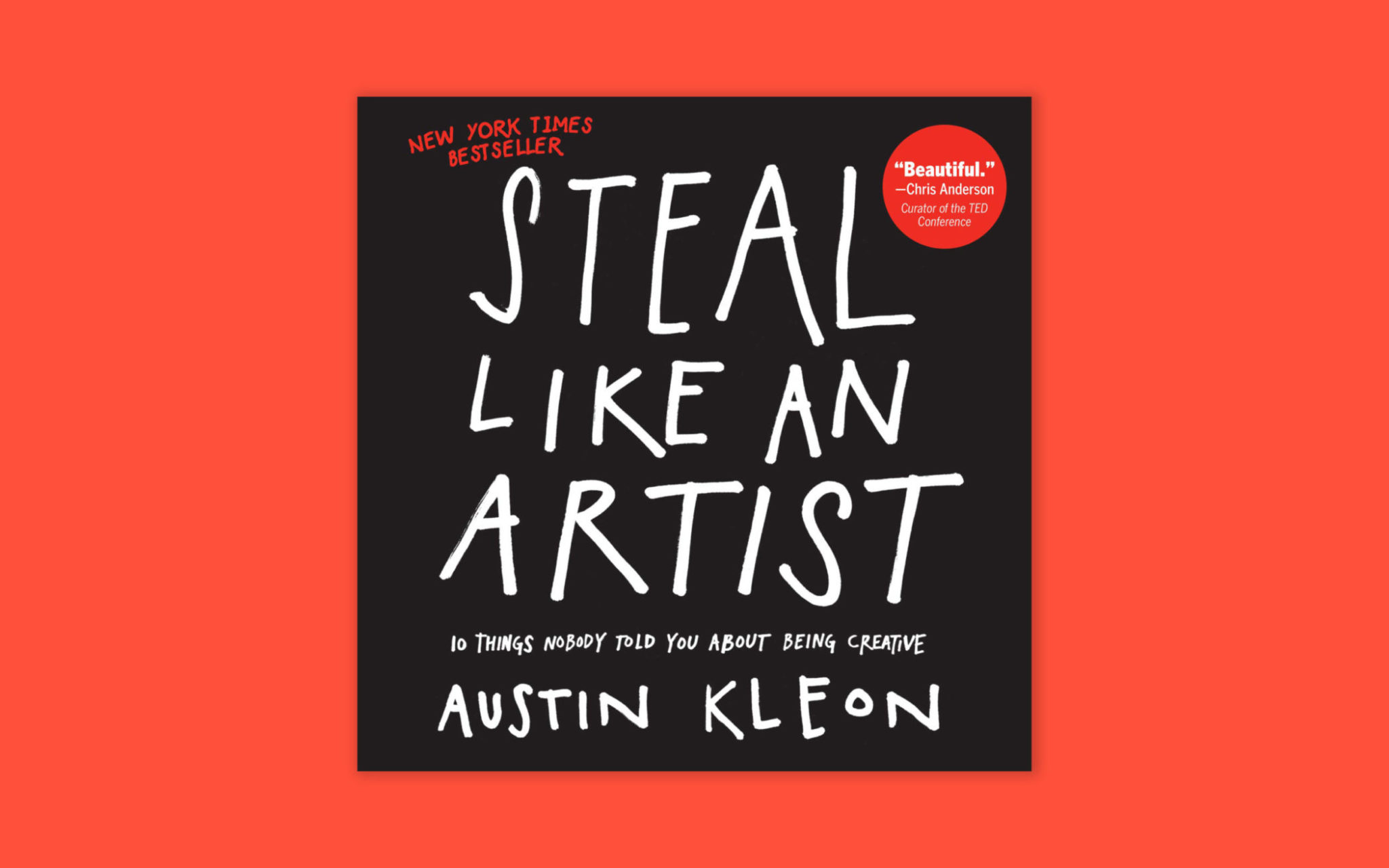TLDR: One of the most beautiful books I’ve ever read. It’s simplistic and perfectly explains a concept in a read you can easily do in a few hours accompanied by perfectly judged illustrations. A book I would recommend to anyone even if their job isn’t directly art or design.
Length: Perfect.
Smell: 6/10 – don’t pretend this doesn’t matter
Total Bookmarks Made: 0 – I couldn’t bring myself to ruin it
Rating: 9.6/10 – would highly recommend
To be honest, I ordered this because ‘show your work’, another Austin Kleon book, was unavailable everywhere. I don’t consider myself an artist by any means so didn’t really think this book would be for me. But boy oh boy was I wrong.
The book gets straight to the point that nothing is original. A potentially depressing epiphany at first, but once you come to terms with it, you actually realise just how freeing it is.
If we’re free from the burden of trying to be completely original, we can stop trying to make something out of nothing, and we can embrace influence instead of running away from it.
In my case, when it comes to web design, this premise totally shifted my mindset. Instead of seeing an incredible website someone else has done and thinking ‘Jesus, how did they come up with that?’ I now collect it as a reference. Inspiration I can tastefully steal and use in my own projects. Not a direct rip off of course, but embracing the inspiration and ideas on offer instead of shunning them due to my having not come up with them myself.
What is originality? Undetected plagiarism.
This is another important principle of Steal Like An Artist. That is that all ideas are unoriginal. Whether detected or not, a creative piece of work has always been influenced by others that have come before it. So if we accept that principle is true, then we are much better to embrace it and openly ‘steal’ than do our best to be ‘original’.
If the choice is between a subconsciously stolen, mediocre piece of work or a consciously stolen masterpiece; I choose the latter every time. Both are stolen, but by embracing the theft, the resulting work and the artist creating it can happily use the best references and inspiration to create the best work possible.
Google everything. I mean everything. Google your dreams, Google your problems. Don’t ask a question before you Google it. You’ll either find the answer or you’ll come up with a better question.
Having quickly summarised the book’s main point in just 19 small pages (some of those being illustrations), Austin goes on to give even more fantastic wisdom in the subsequent 120. This book lives permanently on my desk because each and every page contains a little gem. A painful start to the day or a seemingly infinite afternoon, I’ll reach for Steal Like An Artist to provide me with a boost.
Nobody is born with a style or a voice. We don’t come out of the womb knowing who we are. In the beginning, we learn by pretending to be our heroes. We learn by copying.
We’re talking about practice here, not plagiarism – plagiarism is trying to pass someone else work off as your own copying is about reverse-engineering. it’s like a mechanic taking apart a car to see how it works.


